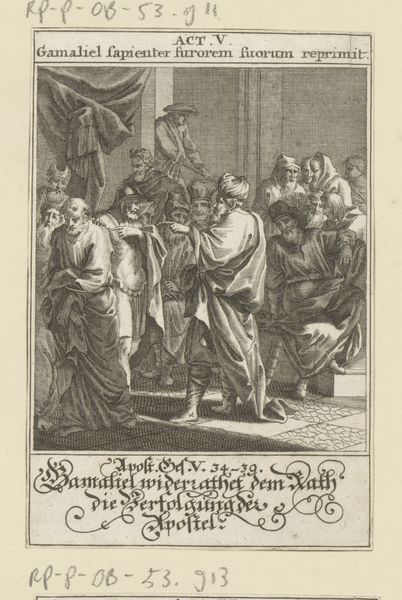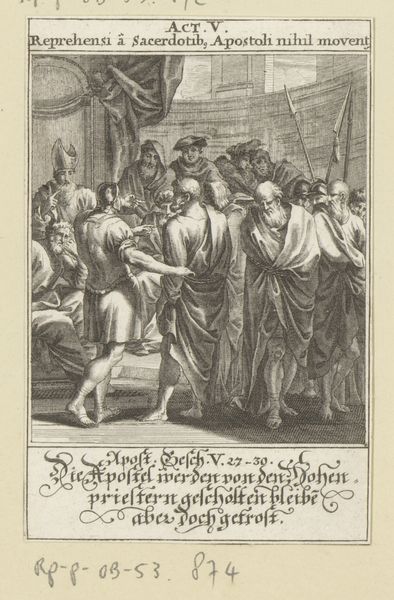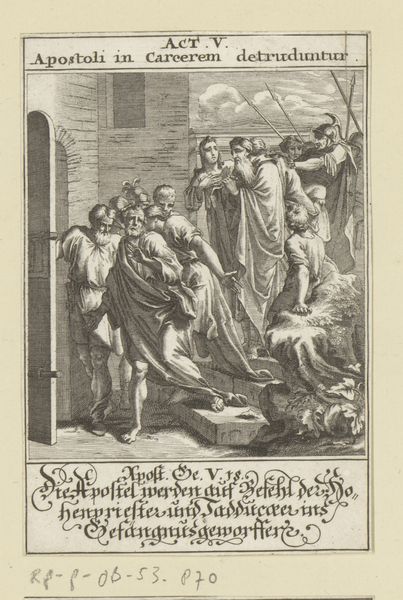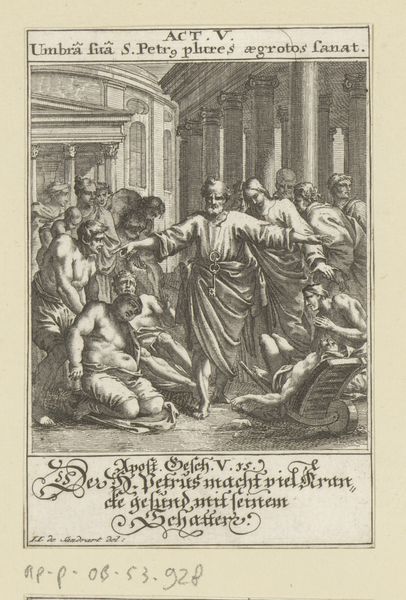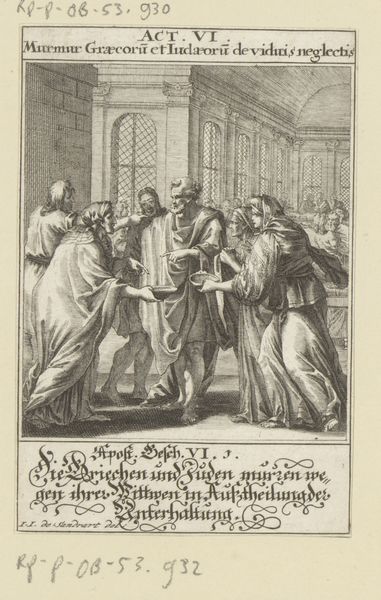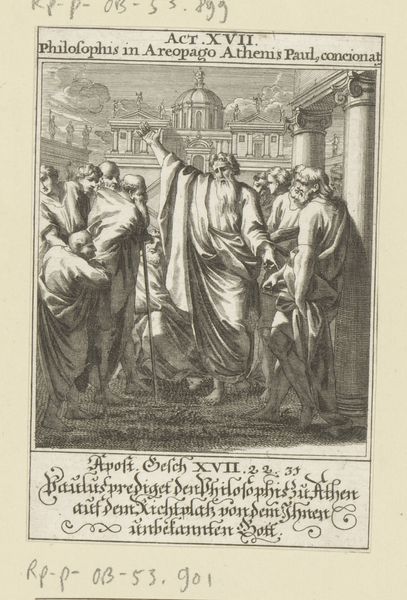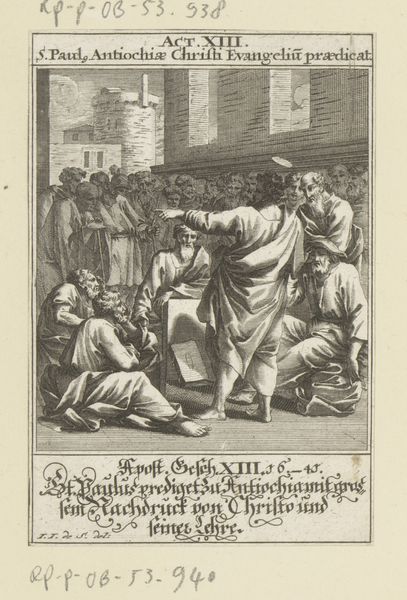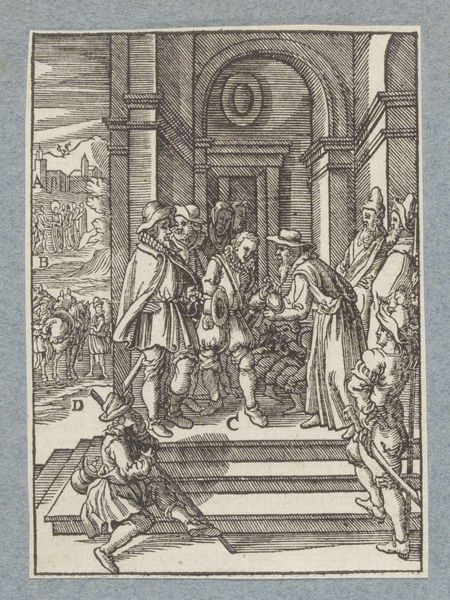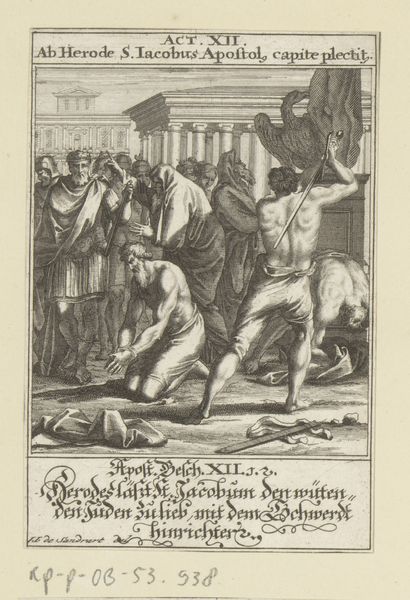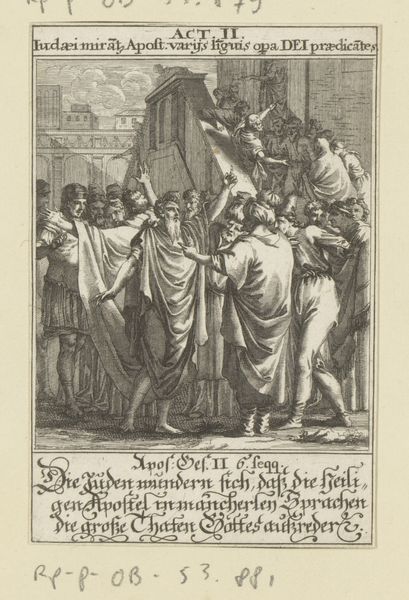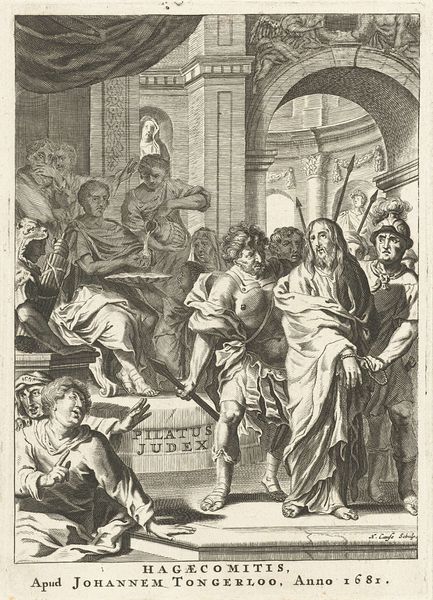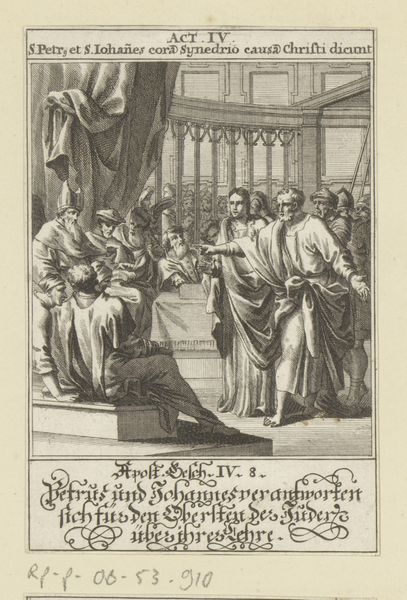
print, engraving
#
baroque
# print
#
old engraving style
#
figuration
#
history-painting
#
engraving
Dimensions: height 121 mm, width 80 mm
Copyright: Rijks Museum: Open Domain
Curator: Looking at this engraving, the first thing that strikes me is the rigid formality. The linear quality of the lines adds to the stark tension of the moment. Editor: Indeed. Here we have "Saffira wordt door de apostelen op de proef gesteld," an engraving from 1697, currently held in the Rijksmuseum. It depicts the biblical scene where Saffira is tested by the apostles regarding her honesty. The piece is unsigned, so we do not know the original creator. Curator: And it powerfully renders a crucial moment. Notice how the apostles are gathered—almost judging her in the architectural space. Their presence echoes a court setting, which is immediately balanced by her posture: arms thrown wide almost innocently. It's quite telling. Editor: It certainly reveals societal concerns of the era. Think about the visual language that the anonymous artist employs here. The setting—is there to remind the viewer that Saffira’s moral failings did not occur in isolation. They happened in front of witnesses within an early communal societal order. Curator: Exactly. And her fate underscores a warning, made explicit by the surrounding group of apostles. We, as the modern viewer, might see this less as divine justice and more as societal pressure, with clear, prescribed gender roles. Editor: Furthermore, such Baroque engravings held didactic public roles within societies gripped by religious fervor, illustrating expected standards and cautionary tales from holy writ for both learned elites and average citizenry. The message is pretty on the nose. Curator: Absolutely, the symbolism underscores her deviation from societal expectations and how quickly those ideals might shatter. It almost becomes more of an example of public humiliation within society than merely the actions of religious zealots. Editor: Considering its lasting influence, this raises so many discussions regarding the shaping and reinforcement of belief in that era through readily available imagery. The politics are ever-present in these scenarios and cannot be extracted. Curator: Precisely, analyzing these prints gives a unique view into past consciousnesses as the artists and audiences imbue symbols like light, gesture, and shadow with complex significances, making history forever relevant through a lasting, humanized lens. Editor: Thank you for this perceptive unpacking. We must consider how each print became a potent artifact shaping society by offering accessible lessons through illustrative forms about faith, governance, and cultural norms, ultimately reinforcing and guiding the existing belief systems.
Comments
No comments
Be the first to comment and join the conversation on the ultimate creative platform.
